Area and circumference of circles
Categories: gcse geometry

A circle is a flat shape that has no corners or straight lines. Every point in the edge of a circle is a fixed distance (called the radius) from the centre.
In this article, we will look at the area and circumference of a circle. We will also look at:
- Arcs
- Segments
- Sectors
Radius and diameter
The radius of a circle is the length of a line drawn from the centre of the circle to any point on its edge. It is the distance r on this diagram:

The diameter of a circle is the length of a line drawn between two points on the edge of a circle that goes through the centre of the circle. It is the distance d on this diagram:
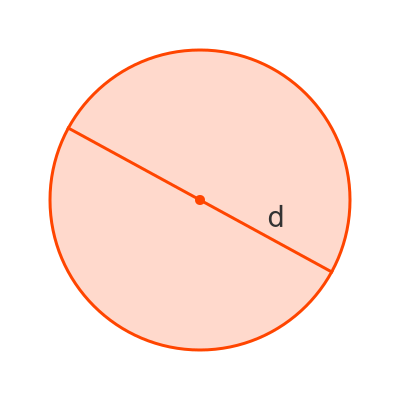
The diameter is twice as long as the radius.
Circumference of a circle
The perimeter of a circle is the distance all the way around the edge of the circle. For circles, the perimeter is usually called the circumference.
The circumference of a circle, C, is given by the formula:
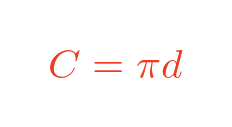
Here, d is the diameter of the circle, and π is a number that is approximately equal to 3.14159.
Since the diameter of a circle is twice its radius, we can write this equation as:
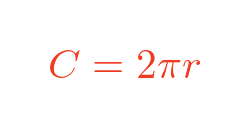
Where r is the radius.
Area of a circle
The circumference of a circle, A, is given by the formula:
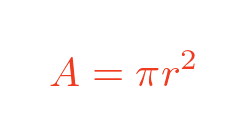
The equation for the area of a circle also uses the same number, π, that is used in the equation for the circumference.
About π
The number π (sometimes written as pi) can be defined as the ratio of the circumference of a circle to its diameter.
Mathematicians have been studying π since ancient times. At first, its value was probably estimated by measuring circles and would have been known to be about 3. Later on, geometric constructions were used to estimate π to several decimal places. Later still, various other methods were discovered, and the advent of modern computers has allowed us to calculate its value to over a billion digits.
We know that π is an irrational number. It cannot be expressed as an exact fraction. If it is expressed as a decimal number (3.141592653589793...) the digits go on forever and never repeat. This means that we can never write down the exact numerical value of π.
Length of an arc
An arc is part of the circumference of a circle. Here are some examples. The thick red line shows the arc:

The arc is defined by the angle it makes at the centre of the circle.
The first example shows an arc of 90°. This takes up a quarter of the circle (because there are 360° in a full circle). Since the circumference of the circle is 2πr, the length of a 90° arc is a quarter of that, which is πr/2.
The second example shows an arc of 180°. This takes up half of the circle. The length of the arc is half of the circumference, which is equal to πr.
The general formula, for the length L of an arc with angle a, is:
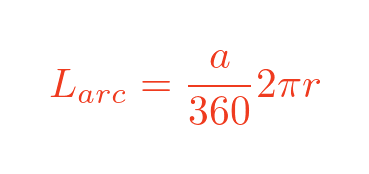
This can be simplified by cancelling out the 2:
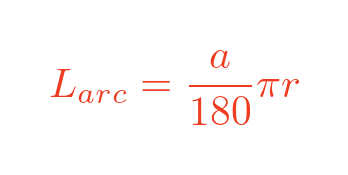
For an arc of angle 240°, this formula gives an arc length of 4πr/3, and for an angle of 72° the length is 2πr/5.
Area of a sector
A sector is a part of the circle enclosed by an arc and two radii. Here are some examples:
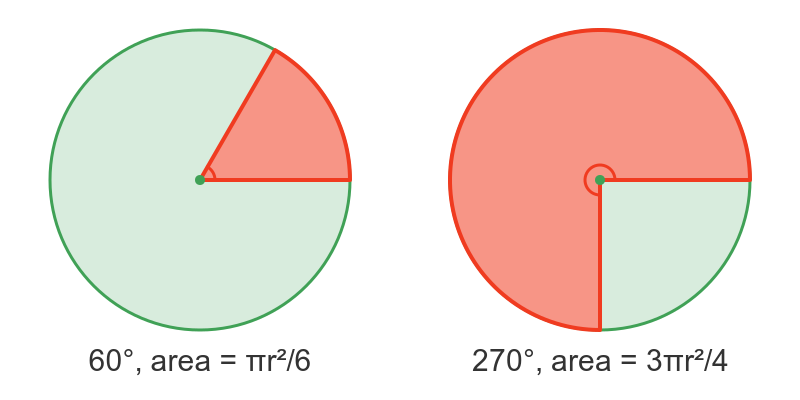
The first example shows a sector with an angle of 60°. This shape is like a pie slice.
This sector represents a sixth of the area of the triangle (since 60° is a sixth of 360°). This means that the area of the sector is πr^2/6.
In general, a sector with an angle a has an area of:

The second example shows a sector with an angle of 240°.
Minor and major sectors
Notice that in each case the circle is actually divided into 2 sectors. In the first example, we have created a sector of angle 60°, but the remainder of the circle is also a sector of angle 300°. One sector is less than 180°, and we call that the minor sector. The other sector is greater than 180° and we call that the major sector.
In the second example, we have created a major sector of 240°, which leaves a minor sector of 120°.
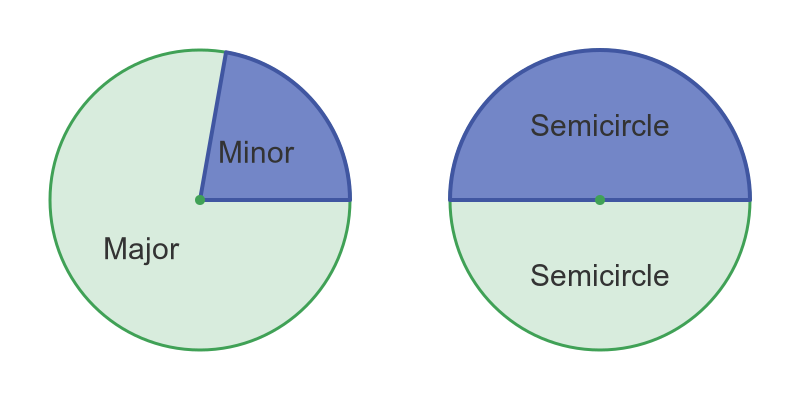
The exception is if the angle is 180°. In that case, the circle is divided into 2 semicircles. A semicircle is a sector, but it is neither minor nor major.
Perimeter of a sector
The perimeter of a sector is the length of the arc plus the lengths of the 2 radii. Using the previous formula for the arc length and adding 2r gives us this formula for the perimeter of a sector:
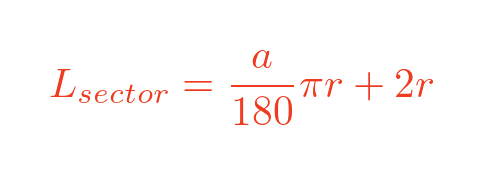
Area of a segment
A segment is formed when a circle is divided by a chord. A chord is a line joining any two points on a circle. Here is an example segment:

A segment is defined by the angle it makes at the centre, just like a sector.
To calculate the area of a segment, we need to calculate the area of the equivalent sector (shown on the left, below), and then subtract the area of the triangle formed by the chord and the 2 radii (shown on the left):
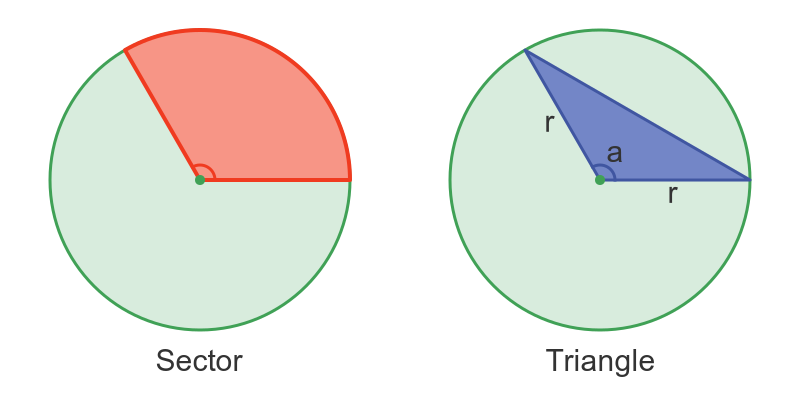
The sector area, as we saw earlier, is:

The area of the triangle, from the article Area and perimeter of triangles, is:
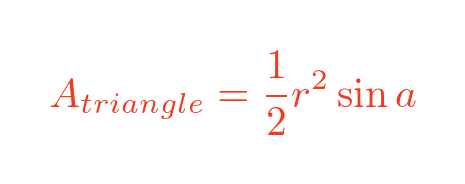
Subtracting the triangle area from the segment area gives:

This can be tidied up to give:

Minor and major segments
The chord divides the circle into two parts:
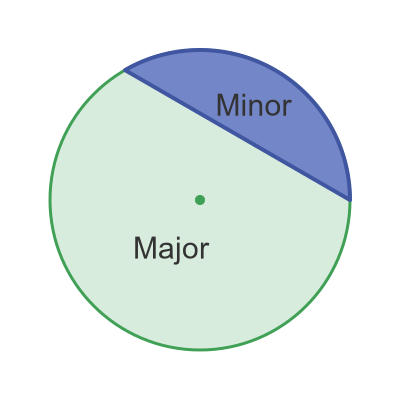
The smaller area, in blue, is called the minor segment. The larger area, in green, is called the major segment.
The major segment is the one that contains the centre of the circle.
The area calculation above applies to the minor segment. To find the area of the major segment we simply subtract the area of the minor segment from the area of the full circle.
If the angle of the segment is 180°, the circle will be divided into two semicircles. They could be considered segments, but they are neither major nor minor segments.
See also

Join the GraphicMaths Newletter
Sign up using this form to receive an email when new content is added:
Popular tags
adder adjacency matrix alu and gate angle answers area argand diagram binary maths cartesian equation chain rule chord circle cofactor combinations complex modulus complex polygon complex power complex root cosh cosine cosine rule countable cpu cube decagon demorgans law derivative determinant diagonal directrix dodecagon eigenvalue eigenvector ellipse equilateral triangle euler eulers formula exercises exponent exponential exterior angle first principles flip-flop focus gabriels horn gradient graph hendecagon heptagon hexagon horizontal hyperbola hyperbolic function hyperbolic functions infinity integration by parts integration by substitution interior angle inverse hyperbolic function inverse matrix irrational irregular polygon isosceles trapezium isosceles triangle kite koch curve l system line integral locus logarithm maclaurin series major axis matrix matrix algebra mean minor axis n choose r nand gate net newton raphson method nonagon nor gate normal normal distribution not gate octagon or gate parabola parallelogram parametric equation pentagon perimeter permutations polar coordinates polynomial power probability probability distribution product rule proof pythagoras proof quadrilateral questions radians radius rectangle regular polygon rhombus root sech segment set set-reset flip-flop sine sine rule sinh sloping lines solving equations solving triangles square square root standard curves standard deviation star polygon statistics straight line graphs surface of revolution symmetry tangent tanh transformation transformations trapezium triangle turtle graphics uncountable variance vertical volume volume of revolution xnor gate xor gate